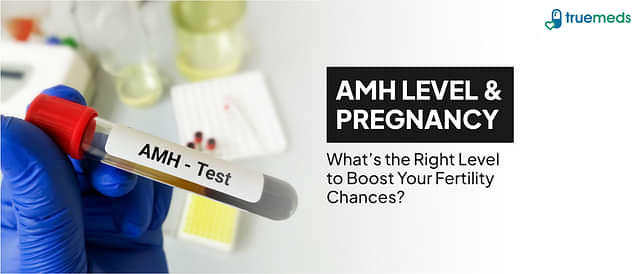Understanding Dangerous Blood Sugar Levels and How to Manage Them
Last updated on : 01 Dec, 2025
Read time : 9 min
Diabetes is a chronic health condition where the body has difficulty maintaining blood sugar (glucose) levels within a healthy range. Insulin, a key hormone made by the pancreas, is essential for moving glucose from the bloodstream into the body’s cells, where it is used for energy. In diabetes, the body either doesn’t produce enough insulin (Type 1 diabetes) or doesn’t use it effectively (Type 2 diabetes), which leads to elevated blood sugar levels.
Regular monitoring of blood sugar levels is a cornerstone of effective diabetes management [1]. Tracking your sugar levels helps you understand how they respond to food, physical activity, and medication. This awareness allows for timely adjustments in lifestyle and treatment, which is crucial for preventing serious long-term complications such as heart disease, kidney damage, vision loss, or severe nerve damage [2]. Read more to understand the target, high, and low blood sugar ranges and how to manage potentially dangerous fluctuations.
What are Target Blood Sugar Levels Before and After Eating?
Target blood sugar ranges vary depending on whether an individual has diabetes and their specific treatment goals.
What Level of Blood Sugar is Considered Dangerous?
While high and low blood sugar levels are common, certain persistent or extreme levels require immediate attention.
Concerning Levels: Blood sugar levels repeatedly exceeding 180 mg/dL after meals or falling below 70 mg/dL are concerning and signal a need for lifestyle or medication review with a healthcare professional [1].
Dangerous Levels (Medical Emergency Risk): Persistent levels above 250 mg/dL or a single reading below 54 mg/dL may be dangerous and require immediate medical evaluation [3],[4].
Consistently high or low levels can lead to acute complications, including Diabetic Ketoacidosis (DKA), Hyperosmolar Hyperglycemic State (HHS), or severe hypoglycemia leading to a coma [3],[4]. Regular monitoring and consultation with a healthcare professional are crucial to maintaining safe blood sugar levels.
Dangerous Blood Sugar Levels – High Range (Hyperglycemia)
When your blood sugar exceeds 250 mg/dL, it is considered a dangerously high sugar level [3]. This condition, known as hyperglycemia, occurs when there is too much glucose in the blood, often because the body isn’t producing or using insulin effectively.
While common in people with diabetes, temporary spikes can occur in anyone due to:
- Insufficient insulin or missed doses of diabetes medication.
- Eating a high-carbohydrate meal.
- Reduced physical activity or being sedentary.
- Certain illnesses, infections, or periods of emotional stress.
Physiological phenomena, such as the dawn phenomenon (increased blood sugar in the early morning) or the Somogyi effect (rebound high blood sugar after an overnight low).
Symptoms and Complications of Hyperglycemia
- When blood sugar is high, you may experience:
- Excessive thirst (polydipsia) and frequent urination (polyuria).
- Fatigue and blurred vision.
If left untreated, severe hyperglycemia can lead to DKA or HHS in adults, which are medical emergencies [3]. In children, high blood sugar can impact growth and development. For pregnant individuals, uncontrolled high sugar levels (gestational diabetes) pose risks to both mother and baby, potentially leading to a higher chance of a large baby (macrosomia), preterm birth, or other delivery complications [5].
Management of High Blood Sugar
It’s essential to address high blood sugar promptly. This involves taking your prescribed medications or insulin as directed. If your blood sugar is consistently high (e.g., above 250 mg/dL), call your healthcare provider for specific advice. Lifestyle measures, including consuming plenty of water (to help flush excess sugar via urine) and physical activity, are vital components of long-term management.
Important Exercise Note: If your blood sugar is over 250 mg/dL, check your urine for ketones. If ketones are present, do not engage in moderate-to-vigorous exercise [1], as it can paradoxically worsen hyperglycemia. Instead, stay hydrated and consult your doctor.
Dangerous Blood Sugar Level – Low Range (Hypoglycemia)
Blood sugar levels are considered low (hypoglycemia) when they fall below 70 mg/dL [1]. If they drop below 54 mg/dL, it is considered a severe or dangerous level that requires immediate intervention [4].
Hypoglycemia is most common in individuals with diabetes who use insulin or certain types of oral diabetes medications. Causes include:
- Skipping or delaying meals.
- An overdose of insulin or diabetes medication.
- Excessive alcohol consumption.
- Unplanned or strenuous exercise without adjusting food intake or medication.
- Symptoms and Complications of Hypoglycemia
- When you have low blood sugar, you may experience:
- Shakiness, sweating, and rapid heartbeat.
- Irritability, confusion, or dizziness.
In severe cases (below 54 mg/dL), it can lead to seizures, loss of consciousness, or coma [4].
Untreated low blood sugar can cause acute issues in all age groups. In adults, it can cause cognitive impairment and, with recurrent episodes, mood changes or even dementia [4]. In children, severe hypoglycemia may cause learning difficulties. During pregnancy, severe low blood sugar can affect the mother and, indirectly, the baby.
Immediate Treatment for Low Blood Sugar
If you experience symptoms of low blood sugar, it’s best to follow the “15-15 Rule” [1]:
- Consume 15 grams of fast-acting carbohydrate, such as 3-4 glucose tablets, a half-cup of juice or regular soda (not diet), or one tablespoon of honey or sugar.
- Wait 15 minutes and check your blood sugar.
- If your blood sugar is still below 70 mg/dL, repeat the process.
- Avoid high-fat or high-fiber carbs (like chocolate or beans), as the fat and fiber slow down sugar absorption, delaying the rise in blood glucose [1].
- The Role of the A1C Test in Diabetes Management
Unlike a glucometer reading, which provides a snapshot, the A1C test (also known as HbA1c or glycated hemoglobin) measures your average blood sugar levels over the past two to three months [1]. It provides a comprehensive picture of long-term blood sugar control.
The goal for most adults with diabetes is to maintain an A1C level below 7% [1]. Achieving this target significantly reduces the risk of long-term complications. The A1C test typically does not require fasting and is usually performed every 3 to 6 months, depending on the individual’s level of blood sugar control.
Normal/Average Blood Sugar Levels Chart
| Category | Blood sugar value after 8 hours of not eating or fasting (mg/dL) | Blood sugar value after 2 hours of eating or postprandial (mg/dL) | A1C Test |
| Normal or Non-Diabetic | 99 or below | Less than 140 | Below 5.7% |
| Prediabetic | 100-125 | 140-180 | 5.7-6.4% |
| Diabetic | 126 or above | 200 or above | 6.5% or above |
Takeaway
Maintaining healthy blood sugar levels is the most critical step in preventing both acute and long-term diabetes complications.
- Urgent Care: A blood sugar level below 54 mg/dL demands immediate action with fast-acting carbohydrates (15-15 Rule), while readings consistently above 250 mg/dL require prompt consultation with a healthcare provider for medication adjustment [1],[3],[4].
- Long-term Management: This involves a multifaceted approach:
- Medication/Insulin: Taking all prescriptions exactly as directed.
- Diet and Lifestyle: Eating a balanced diet with consistent carbohydrate intake and exercising regularly.
- Monitoring: Checking blood sugar levels as recommended by your doctor to guide treatment adjustments.
Prompt and appropriate responses to fluctuations are essential to avoid serious complications such as DKA, seizures, or coma.
Frequently Asked Questions (FAQs)
What is a dangerous level of A1C?
An A1C ≥ 6.5% indicates diabetes. Levels consistently ≥ suggest poor control and significantly increased risk of long-term complications, warranting immediate therapeutic review [1].
Is a blood sugar level of 400 dangerous?
Yes, a blood sugar level of 400 mg/dL is dangerously high (severe hyperglycemia). It requires immediate medical attention to avoid life-threatening complications like DKA or HHS [3].
What level of low blood sugar is dangerous?
Blood sugar below 54 mg/dL is considered dangerously low (severe hypoglycemia). This level may lead to confusion, loss of consciousness, or seizures, and requires immediate treatment and assistance [4].
When should you go to the ER for blood sugar?
You should go to the Emergency Room (ER) if your blood sugar levels are consistently above 300 mg/dL and not responding to home treatments, or if you experience symptoms of Diabetic Ketoacidosis (DKA), such as persistent nausea, vomiting, severe abdominal pain, rapid breathing, or a fruity-smelling breath [3].
References
[1] ElSayed, N. A., Aleppo, G., Aroda, V. R., Bannuru, R. R., Barrow, B., Berard, L., Buse, J. B., Byrd, P., Christman, N., Davies, M. J., Gregory, M., Hirsch, I. B., Jonas, A. J., Joslin, J. H., Khunti, K., Kosiborod, M., Klonoff, D. C., Krumholz, H. M., Lee-Ann, H., Legorreta, K. L., Mangan, M., Mathew, T. K., Metzger, M., Mishkin, B., Mogi, M., Nian, H., Orozco, J. N., Rhee, M. K., Sacks, D. B., Saseen, J. J., Shah, R. D., Shubrook, J. H., Silverman, J. M., Skyler, J. S., Stonehouse, C., Tan, R. C., Tsipas, M., Umpierrez, G. E., Ussif, E., Van Name, M., & Zonszein, J. (2024). Standards of care in diabetes—2024. American Diabetes Association. https://doi.org/10.2337/dc24-S001
[2] American Diabetes Association. (2024, May 22). Complications. https://diabetes.org/about-diabetes/complications
[3] Umpierrez, G. E., Davis, G. M., ElSayed, N. A., Fadini, G. P., Galindo, R. J., Hirsch, I. B., Klonoff, D. C., McCoy, R. G., Misra, S., Gabbay, R. A., Bannuru, R. R., & Dhatariya, K. K. (2024). Hyperglycemic crises in adults with diabetes: A consensus report. Diabetes Care, 47(8), 1257–1275. https://doi.org/10.2337/dci24-0032
[4] Nakhleh, A., & Shehadeh, N. (2021). Hypoglycemia in diabetes: An update on pathophysiology, treatment, and prevention. World Journal of Diabetes, 12(12), 2036–2049. https://doi.org/10.4239/wjd.v12.i12.2036
[5] Centers for Disease Control and Prevention. (2023, May 26). Gestational diabetes. https://www.cdc.gov/diabetes/basics/gestational.html
Disclaimer
Our healthcare experts have carefully reviewed and compiled the information presented here to ensure accuracy and trustworthiness. It is important to note that this information serves as a general overview of the topic and is for informational purposes only. It is not intended to diagnose, prevent, or cure any health problem. This page does not establish a doctor-patient relationship, nor does it replace the advice or consultation of a registered medical practitioner. We recommend seeking guidance from your registered medical practitioner for any questions or concerns regarding your medical condition.
Popular Articles
Recommended Articles
Recent Articles
Company
About UsHealth ArticleHealth StoriesHealth LibraryDiseases & Health ConditionsAyurvedaAll MedicinesAll BrandsNeed HelpFAQSecuritySubscribe
Registered Office Address
Grievance Officer
Download Truemeds
Contact Us
Our customer representative team is available 7 days a week from 9 am - 9 pm.
v4.9.0
2025 - Truemeds | All rights reserved. Our content is for informational purposes only. See additional information.
Our Payment Partners













































